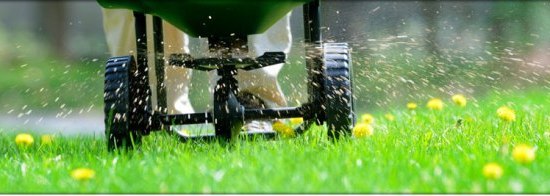Residential Preventative Maintenance
Residential Preventative Maintenance

Your first line of defense against any invaders or flaws in the lawn is simple plant health. If you take care of the lawn with the right nutrition, the proper amount of hydration, and fastidious maintenance, you’ll be giving it the best chance to flourish.
Unfortunately, there is always the possibility that something is going to cause damage or try to overtake the real estate. In creating the perfect circumstances for a lawn to thrive, you’re creating a very inviting habitat for all kinds of plants and insects (even the undesirable ones).
Not to worry though, here at Atlanta Lawn Care Services our team of professionals will provide solutions for every malady a lawn may suffer. Of course, you need to know what to look for as we’ll educate you on the lawn’s most common foes, along with appropriate treatments you’ll need to beat them and keep your lawn in the peak of health.
Residential Lawn Preventative Maintenance Services:
• Fighting Weeds
• Defeating Harmful Insects & Pests
• Dealing with Lawn Diseases
• Improving Site Conditions
There are many ways to classify weeds. Like turfgrasses, there are warm-season and cool-season weeds. A warm-season weed flourishes in the heat of summer, while cool-season species actively grow in spring and fall. Either kind may be found in either season of lawn.
Another useful grouping in terms of heading off weeds before they grown is into annuals, biennials, and perennials.
Annuals – Like annual flowers, annual weeds live their entire life in one growing season. The classification is a little deceptive, however, because of an annual weed matures and produces seeds, new annual weeds will arrive next year. This means you can break the cycle by simply disrupting the creation, dissemination, or germination of those seeds. Common annuals include prostrate knotweed and annual bluegrass.
Biennials – Biennials have a two-year lifecycle. They spend the first year using all their energy to grow, setting down strong roots and establishing themselves in the soil. The second year is focused on flowering and setting seed. These are tough plants to eradicate, because if you don’t kill or remove the first-year root, they will come back with flowers and seeds in year two. Mallow is a common biennial and a familiar interloper in many lawns.
Perennials – Perennial weeds live for multiple years. They will continue through a cycle of dormancy and active growth, and may even fool you into thinking you’ve eradicated them. Some perennials spread through rhizomes and stolons, making them even more difficult to permanently remove from the lawn. The secret is to kill the whole plant, preferably before they flower and set seed. Dandelion and Creeping Charlie are two common perennials.
In addition to their growth periods, weeds are classified based on appearance: Broadleaf weeds have relatively wide leaves with branching veins. Many have conspicuous flowers. Narrow-leafed weeds have grass-like leaves with parallel veins. Dandelion and oxalis are two common broadleaf weeds, while Bermuda grass (in cool-season lawns) and crabgrass are examples of narrow-leaf weeds. The distinction is important because they respond to different herbicides.
Let our team of professionals at Atlanta Lawn Care Services help you maintain a healthy and beautiful lawn year round. Contact us today.
call us at!





